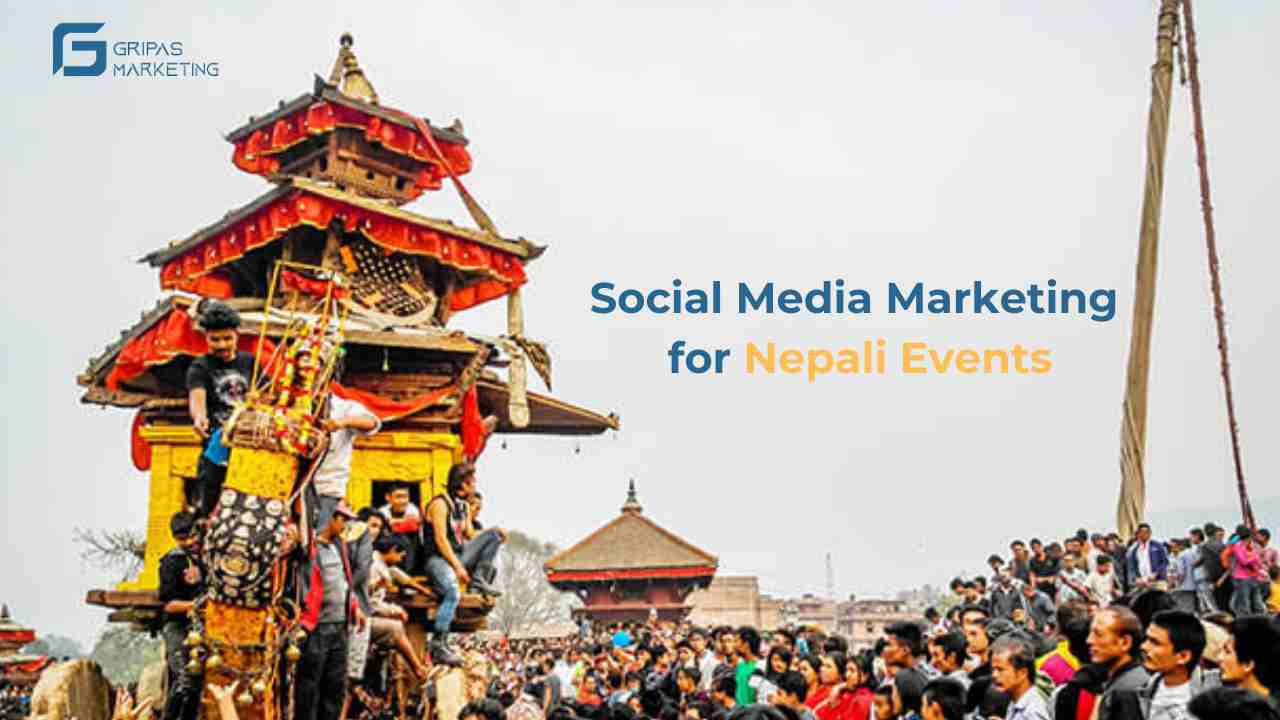Meta Ads Retargeting Roadmap
In the dynamic world of digital advertising, staying connected with your potential customers is a challenge that every marketer faces. While there are various strategies to reach new audiences, one approach stands out as a powerful tool in the arsenal of online advertising – retargeting. In this blog, we will explore the purpose of retargeting and provide insights into how to effectively implement it within the realm of meta ads.
The Essence of Retargeting
Retargeting, also known as remarketing, is a digital advertising strategy that aims to re-engage users who have previously interacted with your website, app, or other digital assets. The central idea behind retargeting is the notion that users who have shown interest in your product or service in the past are more likely to convert compared to completely new leads.
Here’s how it works: a user visits your website, browses your product pages, but leaves without making a purchase. Afterward, as they navigate the vast landscape of the internet, your ads subtly appear on various websites, serving as a gentle reminder of the products they explored. This targeted approach aims to rekindle their interest and nudges them toward taking action, be it making a purchase, signing up for a newsletter, or filling out a contact form.
The Purpose of Meta Ads Retargeting
Now, let’s delve into the significance of retargeting, specifically within the realm of meta ads. Meta ads encompass platforms such as Facebook, Instagram, and others under the Meta umbrella. These platforms offer an expansive user base and sophisticated targeting options. When combined with the power of retargeting, they create a formidable force in digital marketing.
- Highly Personalized Campaigns: Meta ad platforms provide an array of data on user behavior, demographics, and interests. With this wealth of information, you can create highly personalized ad campaigns tailored to specific audiences. The result? A higher likelihood of conversion.
- Precise Targeting: Retargeting on meta ads allows you to reconnect with users at a granular level. For instance, you can target individuals who visited a particular product page or initiated checkout but didn’t complete the transaction. This level of precision ensures that your ads reach users who are already familiar with your offerings.
- Advanced Ad Formats: Meta ad platforms offer diverse ad formats, including image and video ads, carousels, and interactive content. These formats allow for creative and engaging retargeting campaigns that capture the attention of users.
- Expansive Reach: The user base of meta ad platforms is vast, spanning different demographics, interests, and geographic locations. This broad reach ensures that your retargeting efforts can connect with a diverse audience.
Building Custom Audiences for Precision
To harness the full potential of retargeting in meta ads, the creation of custom audiences is a pivotal step. Custom audiences are groups of users segmented based on their interactions with your digital assets. Here are some key categories for building custom audiences:
- Website Visitors: Segment users who have visited your website, considering different pages they viewed or the time they spent on your site. This segmentation allows you to tailor your ads based on the specific interests of users.
- Abandoned Carts: If you operate an e-commerce site, focus on users who added products to their shopping carts but abandoned the process. By targeting this audience, you can remind them of the products they left behind and encourage them to complete their purchase.
- Email Subscribers: For those with an email list, retargeting email subscribers can be a powerful strategy. It’s an opportunity to nurture leads and guide them towards conversion.
- Lookalike Audiences: Expand your reach by creating lookalike audiences. These audiences mirror the characteristics of your existing customers, helping you find new potential customers who share traits with your current audience.
Crafting Compelling Ad Content
The heart of any retargeting campaign lies in the quality of your ad content. Since you are re-engaging users who have already interacted with your brand, your ads must be compelling, relevant, and personalized:
- Personalization: Tailor your ad content based on user behavior and preferences. Show them products or services they’ve shown interest in, or recommend related items.
- Overcoming Objections: Anticipate common objections or concerns that potential customers may have and address them in your ad content. Providing solutions or addressing doubts can boost conversion rates.
- Clear Call-to-Action (CTA): Make it easy for users to take action. Whether it’s making a purchase, signing up, or filling out a contact form, a clear and compelling CTA is essential.
- Visual Appeal: Use high-quality images and graphics that catch the eye. A picture is worth a thousand words, and in the digital world, it can make all the difference.
The Role of Data in Retargeting
Data is the backbone of successful retargeting campaigns. Leveraging user data effectively can significantly improve the efficiency and impact of your ads:
- Data Analysis: Regularly analyze user data to identify patterns and behaviors. This can help you create highly targeted retargeting campaigns.
- Segmentation: Segment your custom audiences further by diving into data, such as demographics, location, and device usage. This allows for even more precise targeting.
- Retargeting Algorithms: Consider using retargeting platforms that employ advanced algorithms to automate ad delivery based on user behavior, ensuring that your ads reach users at the most opportune moments.
Dynamic Product Retargeting
For e-commerce businesses, dynamic product retargeting is a game-changer. This approach involves showing users the exact products they viewed on your website, along with relevant recommendations. Dynamic retargeting ads have been known to significantly boost conversion rates.
Optimizing Ad Delivery for Better Results
The timing of your ad delivery is crucial to retargeting success. Ensure that your ads are delivered at the right moment when potential customers are most receptive:
- Ad Scheduling: Use ad scheduling to choose the best times of day or days of the week to show your ads. This can vary based on your audience and their behavior.
- Frequency Capping: Implement frequency capping to limit the number of times a user sees your ads within a specific time frame. This helps prevent ad fatigue and annoyance.
In the world of retargeting in meta ads, mastering the art of precise timing can be the key to success.
Measuring and Analyzing Retargeting Campaigns
To understand the effectiveness of your retargeting campaigns, you need to measure and analyze various key performance metrics:
- Click-Through Rates (CTR): CTR measures the percentage of users who clicked on your retargeting ads. It’s a key indicator of ad engagement.
- Conversion Rates: Conversion rates measure the percentage of users who completed the desired action after interacting with your retargeting ad, such as making a purchase or signing up.
- Return on Ad Spend (ROAS): ROAS quantifies the revenue generated for every dollar spent on your retargeting campaign. It’s a crucial metric for evaluating the campaign’s profitability.
By regularly monitoring these metrics, you can make data-driven adjustments to your retargeting strategy, ensuring optimal performance.
Retargeting on Social Media Platforms
Social media platforms provide a fertile ground for retargeting. Platforms like Facebook and Instagram offer a wealth of user data and advanced targeting options that can amplify your retargeting success. Leverage the following tips:
- Facebook Pixel: Implement the Facebook Pixel on your website to track user behavior. It enables you to create custom audiences and deliver highly targeted ads.
- Instagram Stories: Utilize the immersive format of Instagram Stories for creative and engaging retargeting campaigns.
- Sponsored Posts: Boost your retargeting efforts by sponsoring posts and ensuring they reach a wider audience.
- Video Ads: Incorporate video content into your retargeting strategy, as it often garners higher engagement.
Social media platforms offer diverse tools and ad formats that cater to different campaign objectives, making them valuable assets for retargeting.
The Art of A/B Testing
A/B testing is a valuable tool in retargeting that allows you to optimize your ad campaigns. Here’s how to do it effectively:
- Define Hypotheses: Start by formulating hypotheses about what aspects of your retargeting campaigns you want to test. This could include ad headlines, ad copies, visuals, or landing page layouts.
- Set Up Experiments: Create two or more versions of your ad elements. Ensure that you only change one variable at a time to isolate the impact of the change.
- Analyze Results: Run the experiments and monitor the results closely. Pay attention to key performance metrics and evaluate which version performed better.
- Implement Changes: Based on your findings, implement the changes that resulted in improved performance. Continuous A/B testing allows you to refine your retargeting strategy over time.
Budgeting and ROI in Retargeting
A well-balanced budget is essential for successful retargeting campaigns. Consider the following tips:
- Define Clear Goals: Begin by setting clear objectives for your retargeting campaigns. This could be increasing website traffic, generating leads, or driving sales.
- Allocate Budget: Allocate your budget based on your campaign goals. Different objectives may require varying levels of investment.
- Track ROI: Regularly monitor your return on investment (ROI) to ensure that your retargeting campaigns are generating positive returns. Adjust your budget as needed to maximize ROI.
Avoiding Common Retargeting Pitfalls
While retargeting can yield impressive results, it’s not without its pitfalls. To ensure success, avoid these common mistakes:
- Overexposure: Bombarding users with too many ads can lead to ad fatigue, annoyance, and even negative brand perceptions. Implement frequency capping to strike the right balance.
- Neglecting Ad Creatives: Failing to refresh your ad creatives can lead to diminishing returns. Keep your ads visually appealing and up-to-date.
- Not Excluding Converted Customers: Ensure that users who have already completed the desired action, such as making a purchase, are excluded from further retargeting campaigns to avoid redundancy.
Ethical Considerations in Retargeting
Responsible retargeting is not just about driving conversions; it also involves respecting user privacy and consent. To maintain an ethical approach:
- Data Privacy Compliance: Ensure that your retargeting efforts adhere to relevant data protection regulations, such as GDPR (General Data Protection Regulation) or CCPA (California Consumer Privacy Act).
- Provide Opt-Out Options: Give users the option to opt out of retargeting if they wish to do so. Transparency and choice are essential in ethical retargeting.
- Data Security: Safeguard user data and take measures to protect it from breaches or unauthorized access.
- Honesty and Transparency: Be honest in your advertising and transparent about your retargeting practices. Build trust with your audience.
Conclusion: The Power of Retargeting in Meta Ads
In conclusion, retargeting is an indispensable strategy in the world of meta ads. By reconnecting with users who have shown interest in your offerings, you can significantly boost your conversion rates and return on investment. Crafting personalized ad campaigns, analyzing data, and staying ethical in your approach are key to retargeting success.
As you embark on your retargeting journey, remember that it’s an ongoing process of refinement. The key to success lies in continuous analysis, experimentation, and adaptation to user behavior and market trends. Harness the power of retargeting, and watch your meta ad campaigns flourish.
FAQs
1. What’s the difference between retargeting and remarketing?
- Retargeting and remarketing are often used interchangeably, but they refer to the same concept. Both involve targeting users who have engaged with your digital assets in the past.
2. How can I build custom audiences for retargeting?
- Custom audiences are created by segmenting users based on their interactions with your website or app. This can include actions like visiting specific pages, adding products to a cart, or signing up for newsletters.
3. What is the ideal frequency for retargeting ads?
- The ideal ad frequency varies, but it’s crucial to monitor ad fatigue. Start with a lower frequency cap and adjust it based on user response.
4. Can retargeting be used for B2B marketing?
- Yes, retargeting can be effective in B2B marketing. You can target businesses that have shown interest in your services or products.
5. How can I ensure my retargeting efforts comply with data privacy regulations?
- To ensure compliance, obtain user consent, provide opt-out options, and adhere to relevant data protection laws, such as GDPR or CCPA.
By following these guidelines and staying ethically responsible, you can harness the full potential of retargeting in your meta ad campaigns, ensuring a positive user experience and robust business growth.



